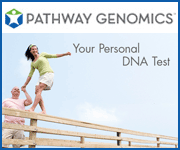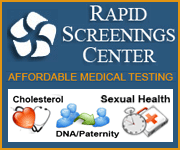By: Erin Hasinger, Tests.com
DNA testing has a tremendous number of uses, especially for genetics. DNA, or deoxyribonucleic acid, is found in nearly every organism’s cells and contains each person’s hereditary programming. Information contained within DNA can tell scientists, investigators and others if people are related, and how close their blood relationship is. DNA tests are considered to be 99.5 percent accurate.
Approximately 99 percent of all human DNA chemical bases are the same; the remaining one percent is what differentiates individual people from one another. Only identical twins share the exact same DNA.
During a DNA test, one provides a DNA sample. For paternity or other relationship-type testing, a buccal, or cheek, swab is the most commonly-used method for collecting DNA. DNA can be extracted from any body fluid or tissue sample, but a buccal swab is considered the preferred method because it is quick, painless and easy to ship to a laboratory.
During a cheek swab, a cotton swab is brushed against the inside of one’s cheek. The sample of cells is then analyzed in a laboratory. The DNA is extracted from these cells, and then compared against another sample to determine relationship.
DNA tests are readily available, and most people can select a test provider online. The company will mail a DNA test kit to the requester’s home. The kit will include detailed instructions on collecting the cheek swab with the provided materials as well as instructions on shipping the sample to the lab for analysis. DNA test results can be made available in anywhere from 24 hours to two weeks, depending on the type of test and number of participants.
DNA tests can be used for a number of different reasons, including:
- Ancestry – An ancestry DNA test is used to determine one’s family lineage or ethnicity. Researchers have determined certain DNA markers that are common to particular ethnic groups. By analyzing one’s DNA for these markers, labs are able to approximate from where in the world one’s ancestors originated. To learn more, see the Ancestry DNA Test Guide.
- Immigration – When someone seeks US citizenship because an immediate family member is already a citizen, a DNA test may be ordered to prove the relationship. Immigration DNA tests are only used as a last resort when official documentation is not available. For more, see the Immigration DNA Test Guide.
- Maternity – Maternity DNA tests are used to prove a mother-child relationship, and may be sought in cases of adoption or immigration. Maternity confirmation may also be sought to confirm correct in vitro fertilization or in the case of a suspected baby switch in a hospital nursery. For more on maternity DNA, please visit the Maternity DNA Test Guide.
- Paternity – Paternity DNA tests are used to determine who has fathered a child. In a paternity DNA test, the mother is also usually tested along with the suspected father and child. Testing the mother excludes half of the child’s DNA, making testing easier. To find out more about paternity DNA tests, see the Paternity DNA Test Guide.
- Relationship – Relationship DNA testing can be used to help determine maternity or paternity by testing suspected siblings, grandparents or other relatives. One’s DNA is compared to their other relatives to find commonalities. Relationship DNA testing is done when the suspected mother or father is unavailable or unwilling to be tested. For more on Relationship DNA tests, take a look at the Relationship DNA Test Guide.
- Twin Zygosity – A twin zygosity DNA test is used to determine if twins or identical or fraternal. Typically, at birth, doctors make this determination by examining the placenta or placentas. Identical twins share one placenta while fraternal twins each have their own. A DNA test may be used when a doctor is unable to make a firm determination or when parents suspect the initial finding is incorrect. Learn more about twin zygosity DNA tests by reading the Twin Zygosity DNA Test Guide.
For more on DNA tests in general, see the Genetics Test Directory. Also, consider reading the DNA Test Guide, or interviews with DNA test experts Kristine Ashcraft and Dr. Michael Baird to learn more.
Sources: US National Library of Medicine, National Human Genome Research Project





